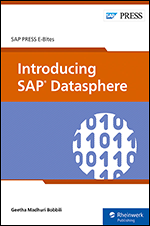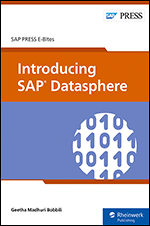Implementing SAP CRM: The Guide for Business and Technology Managers
- 9h 55m
- Vivek Kale
- CRC Press
- 2015
- Provides a comprehensive framework and plan for the successful implementation of a SAP CRM
- Covers the complete SAP CRM project cycle, from the prerequisites to the five phases of the SAP ASAP implementation methodology
- Describes the main SAP CRM components, including enterprise applications, e-business applications, SAP NetWeaver, and SAP programming and development tools
- Details the critical success factors (CSFs), patterns, and anti-patterns of a successful SAP CRM implementation
- Introduces the Balance Scorecard method to assess the performance of implemented CRM systems
Summary
In today's competitive business environment, most companies realize that the better they can manage their customer relationships, the more successful they will become. Customer Relationship Management (CRM) software systems are key tools for companies to manage the customer-facing processes of their businesses. However, many companies have resisted implementing this most critical customer-oriented application due in large part to the lack of a single-point resource on implementing a CRM system. This book attempts to fill that gap.
Implementing SAP CRM will help technologists and managers come to grips with the vision, concept, and technology of CRM. It begins by laying out the groundwork for understanding CRM. It explains the concept and context of CRM and the tangible business benefits of CRM adoption. Demonstrating a professional approach to the evaluation and selection of SAP, it details the critical success factors (CSFs), patterns, and anti-patterns of a successful SAP CRM implementation.
CRM implementations can add significant benefit to the company’s bottom line only if the company first transforms itself into a customer-centric and customer-responsive enterprise. This book explains what it means to be a customer-centric and responsive enterprise, and provides a framework for business operations based on customer relationships, rather than the traditional four Ps (product, positioning, price, promotion). It further spells out business process reengineering (BPR) strategies to configure internal business processes and operations with SAP CRM to improve customer-facing strategies, services, and relationships.
About the Authors
Vivek Kale has more than two decades of professional IT experience, during which he has handled and consulted on various aspects of enterprise-wide information modeling, enterprise architectures, business process redesign, and e-business architectures. He has been group CIO of Essar Group, the steel, oil, and gas major of India, as well as Raymond Ltd., the textile and apparel major of India. He is a seasoned practitioner in transforming the business of IT, facilitating business agility, and enabling the process-oriented enterprise.
He is the author of Implementing SAP R/3: The Guide for Business and Technology Managers (2000), A Guide to Implementing the Oracle Siebel CRM 8.x (2009), Guide to Cloud Computing for Business and Technology Managers: From Distributed Computing to Cloudware Applications (2014), and Inverting the Paradox of Excellence: How Companies Use Variations for Business Excellence and How Enterprise Variations Are Enabled by SAP (2014).
In this Book
-
The Relationship-Based Enterprise
-
Customer Relationship Management (CRM) System
-
CRM Evaluation
-
CRM Selection
-
SAP CRM Solution
-
SAP CRM ImplementationProject Cycle
-
SAP CRM and Enterprise Business Process Re-Engineering
-
SAP CRM Enterprise Applications
-
SAP E-Business Applications
-
SAP CRM Application Environment
-
SAP Tools and Programming
-
Initiating the SAP Project
-
SAP ASAP Methodology
-
Supporting and Enhancing SAP CRM
-
Valuing the Relationship-Based Enterprise
-
Beyond the Relationship-Based Enterprise




